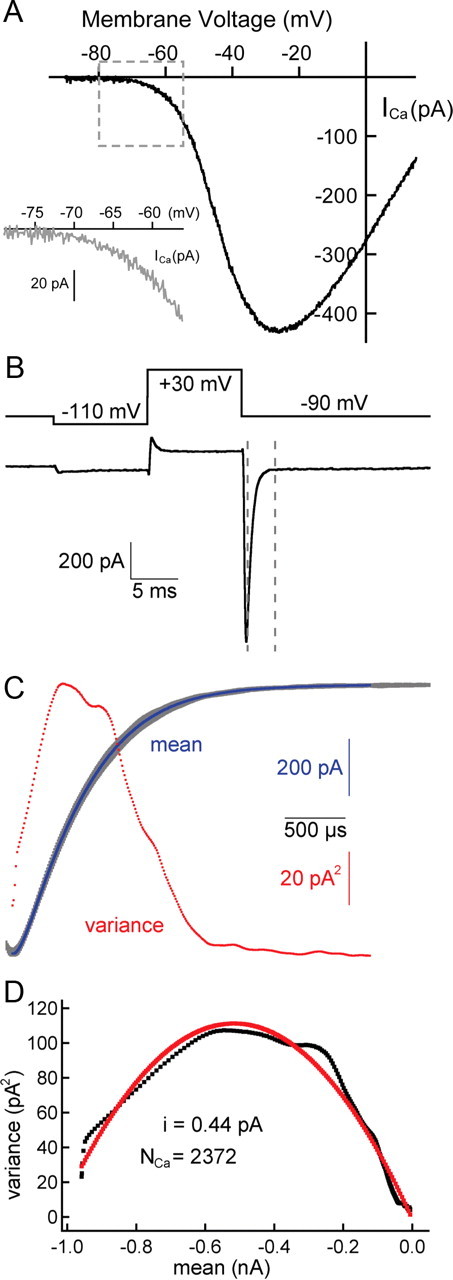Figure 6.

Noise analysis: the number of Ca2+ channels and size of single-channel currents. A, The Ca2+ current I–V relationship for amphibian papilla hair cells after leak subtraction, series resistance compensation (80–90%), and liquid junction potential correction. The Ca2+current (ICa) begins to activate at approximately −70 mV (inset) and peaks at approximately −30 mV (n = 5 cells). B, The hair cell was held at −90 mV, briefly hyperpolarized to −110 mV to relieve any steady-state inactivation, and then depolarized to +30 mV for 10 ms to open all Ca2+ channels. A Ca2+ tail current (bottom trace) was elicited by repolarizing the hair cell from +30 to −90 mV (top trace) in the presence of the L-type Ca2+ channel agonist BayK 8644 (5 μm) and 2 mm external Ca2+. The decay of the tail current between the two dashed lines was used for noise analysis. C, Here, we show 100 superimposed traces (in gray) that were obtained with the same protocol as in B. The mean (in blue) and variance (in red) were calculated on a point-by-point basis. D, The variance was plotted against the mean (in black). The single-channel current (i = 0.44 pA) and the number of Ca2+ channels (NCa = 2372) were estimated by fitting the data to a parabolic function (in red) (see Materials and Methods).
